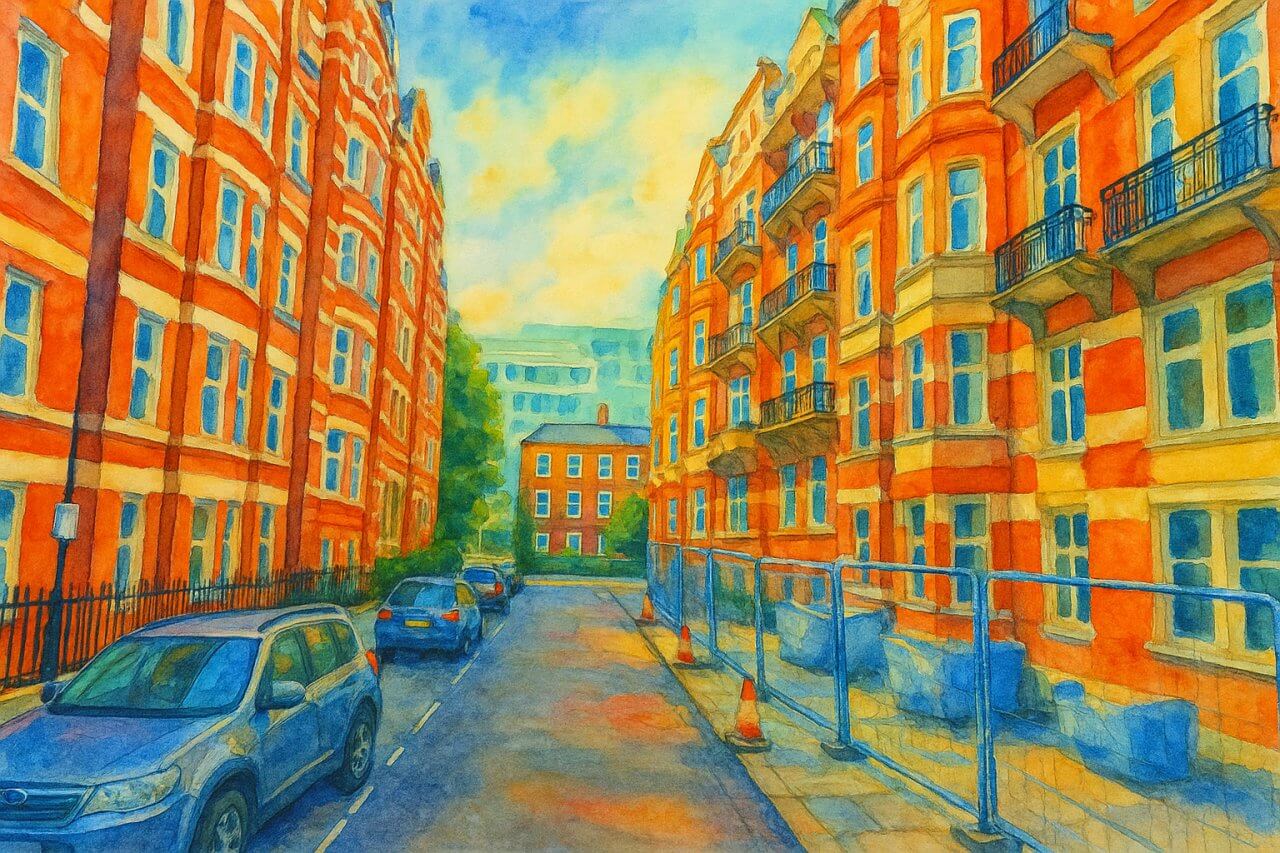
Stafford Place, London
Hidden just off the bustle of Palace Street and steps from Buckingham Palace, Stafford Place is a short, elegant cul-de-sac with a rich past and enviable address.
Stafford Place is located in the heart of the City of Westminster, one of the most historic and prestigious areas of Central London. The street runs north from Palace Street, branching into Buckingham Mews and a small unnamed lane that leads to Buckingham Gate.
Its proximity to Buckingham Palace places it within a stone’s throw of one of London’s most iconic landmarks, making it both historically significant and strategically positioned.
Length and Layout of the Road
Stafford Place is a short street, measuring just under 160 feet (approximately 50 metres) in length. It has the feel of a quiet mews, ending in a gentle curve toward its junctions with Buckingham Mews and the lane to Buckingham Gate.
Despite its small size, Stafford Place is well-maintained and lined with a mixture of period buildings, luxury apartments, and offices, giving it a distinctly exclusive atmosphere.
History of Stafford Place
Stafford Place was developed in the early 19th century during a period of intensified urban development around Buckingham Palace, which itself was transformed from Buckingham House into a royal residence during the reign of George IV.
Much of the surrounding street layout, including Palace Street and Buckingham Gate, evolved in tandem with the palace’s redevelopment and the growing prestige of nearby Victoria. Stafford Place was likely completed by the 1830s.
Origin of the Name
The street is thought to be named after either Stafford House (now Lancaster House), a grand nearby mansion built for the Duke of York and later the Duke of Sutherland, or the historical Earls of Stafford.
Its precise naming date is unclear, but maps from the mid-19th century show Stafford Place already in place. The name reflects the aristocratic flavour of the area and its royal connections.
Character and Atmosphere
Stafford Place has a refined, tucked-away character that contrasts with the busy thoroughfares around Victoria and St James’s Park. It serves as a quiet cul-de-sac with limited vehicle access, giving it a peaceful, residential feel despite its central location.
Buildings are predominantly Georgian and Victorian in style, and many have been refurbished into offices, embassies, or high-end flats. There is little through traffic, and the cobbled appearance near the mews enhances its charm.
Real Estate and Property Prices
As of May 2025, property on Stafford Place is in the top tier of London real estate. The average asking price for a two-bedroom flat in this street is around £2.4 million, depending on the finish and exact location within the road.
Properties on Stafford Place typically range from 900–1,400 sq ft (83–130 sq metres) for flats and maisonettes, with some larger properties on adjacent mews streets exceeding 2,000 sq ft (185 sq metres).
Compared to the London average—currently around £530,000—Stafford Place commands a significant premium, reflecting its proximity to the royal residence, its exclusivity, and historical appeal.
Nearest Underground Stations
Stafford Place is well-served by several London Underground stations, making it easy to access the rest of the capital:
- Victoria Station (Victoria, District, and Circle lines) – around a 5-minute walk.
- St James’s Park Station (District and Circle lines) – approximately 7 minutes on foot.
- Green Park Station (Victoria, Jubilee, and Piccadilly lines) – about 12–15 minutes away.
Nearby Bus Stops and Routes
The closest bus stops are located on Victoria Street and Buckingham Gate, both a short walk from Stafford Place. Buses that serve these stops include:
- Bus 11 – Fulham Broadway to Liverpool Street
- Bus 24 – Hampstead Heath to Pimlico
- Bus 148 – White City to Camberwell Green
- Bus 211 – Hammersmith to Waterloo
- Bus C1 – Victoria to White City (via Kensington)
Fun Fact: Royal Post Boxes and Historic Plaques
A fun detail for visitors is the presence of a historic red post box on Stafford Place, thought to date from the reign of Queen Victoria. These cast-iron boxes are listed and preserved as part of London’s postal heritage.
Additionally, the area is home to several blue plaques and markers commemorating diplomats, authors, and Victorian-era figures who once lived nearby.
Quick Facts
- Location: Westminster, Central London
- Length: Approximately 160 feet (50 metres)
- Nearby Roads: Palace Street, Buckingham Mews, Buckingham Gate
- History: Built in early 1800s, developed with nearby royal buildings
- Name Origin: Possibly named after Stafford House or the Earls of Stafford
- Character: Quiet cul-de-sac, historic charm, high-end residential and office use
- Property Prices (2025): Around £2.4 million for a two-bed flat (900–1,400 sq ft / 83–130 sq m)
- Nearest Tube: Victoria (Victoria, District, Circle), St James’s Park (District, Circle)
- Nearby Buses: 11, 24, 148, 211, C1
- Fun Fact: Features a Victorian-era red post box and nearby blue plaques
Map of Stafford Place, London

Painting of Stafford Place, London (View image in full size)